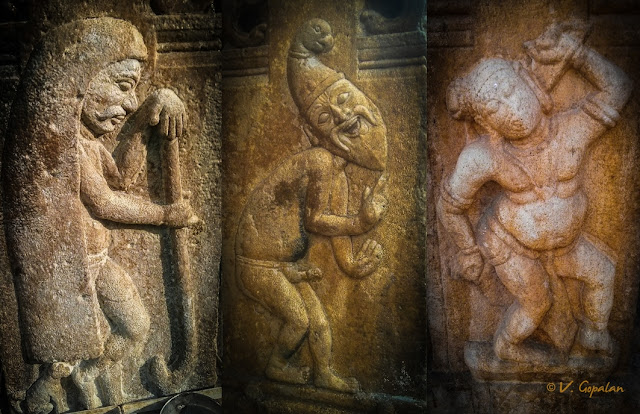Stone art in India dates back to the era of Prehistoric art. Sculpture was the earliest artistic expression throughout the Indian subcontinent. Sculpture was mainly used as a form of religious art to illustrate the principles of Hinduism, Buddhism and Jainism. The origin of Plastic Art in India dates back to terracotta sculptures of Indus valley civilization and pioneering bronze sculptures of the Harappan Culture. Other important milestones in the history of Indian sculpture include: the Buddhist Pillars of Ashoka of the Mauryan period; the figurative Greco-Buddhist sculpture of the Gandhara and Mathura schools, and the Hindu art of the Gupta period (1st-6th century CE). During the subsequent five centuries a wide range of sculptural forms flourished in India. The end of the most creative stage of Indian sculpture was reached with the erection of Khajuraho Temples in Madhya Pradesh by Chandela dynasty during the 10th/11th century. Most of the Indian sculptures were made by anonymous sculptors. This post will specifically attempt to discuss different types of Relief Sculptures found in the temples of the Indian subcontinent.
 |
| Example of a Relief sculpture |
Relief is a sculptural technique where the sculptured elements remain attached to a solid background of the same material. The term relief is from the Latin verb relevo , to raise. What is actually performed when a relief is cut in from a flat surface of stone is a lowering of the field leaving the un-sculptured parts seemingly raised. This technique involves considerable chiselling away of the background which is a time consuming exercise. But the relief saves forming the rear of the subject, is less fragile and more securely fixed to its background than a sculpture in the round.
There are different types of relief depending on the degree of projection of the sculptured form from the field.
LOW OR BAS RELIEF
High relief is one in which the forms and figures project out from the background to half or more than half of their natural depth. They are also called as alto-relievo. Some parts in high relief may be completely disengaged from the platform thus approximating sculpture in the round. High-relief uses essentially the same style and techniques as free-standing sculpture, and in the case of a single figure gives largely the same view as a person standing directly in front of a free-standing statue would have. Most of the large sculptures created in monuments and temple architecture in India have used this technique. Most of the grand figure reliefs in ancient Indian sculptures have used a very "high" version of high-relief, with elements often fully free of the background, and parts of figures crossing over each other to indicate depth.
SUNK OR SUNKEN RELIEF
Sunk or sunken relief is one in which the image is made by cutting the relief sculpture itself into a flat surface. In most cases the figure itself is in low relief, but set within a sunken area shaped round the image, This method minimizes the work of removing the background, while allowing normal relief modelling.. The technique is most successful with strong sunlight to emphasize the outlines and forms by shadow, as no attempt was made to soften the edge of the sunken area, leaving a face at a right-angle to the surface all around it.
 |
| Panel containing sunk relief of undifferentiated Jain saviors in cave number 4 at Badami, Karnataka, India. These were carved in the later part of 6th century |
 |
| 6th Century Sunk relief on the pillar depicting Vamana Avtar of Vishnu in Sangameswarar Temple of Alampur, Andhra Pradesh. |
 |
| Sunken relief found in 12th century Darasuram Airavatesvara Temple at Darasuram, Tamil Nadu, India This is a UNESCO World Heritage Site |
ROCK RELIEFS
















